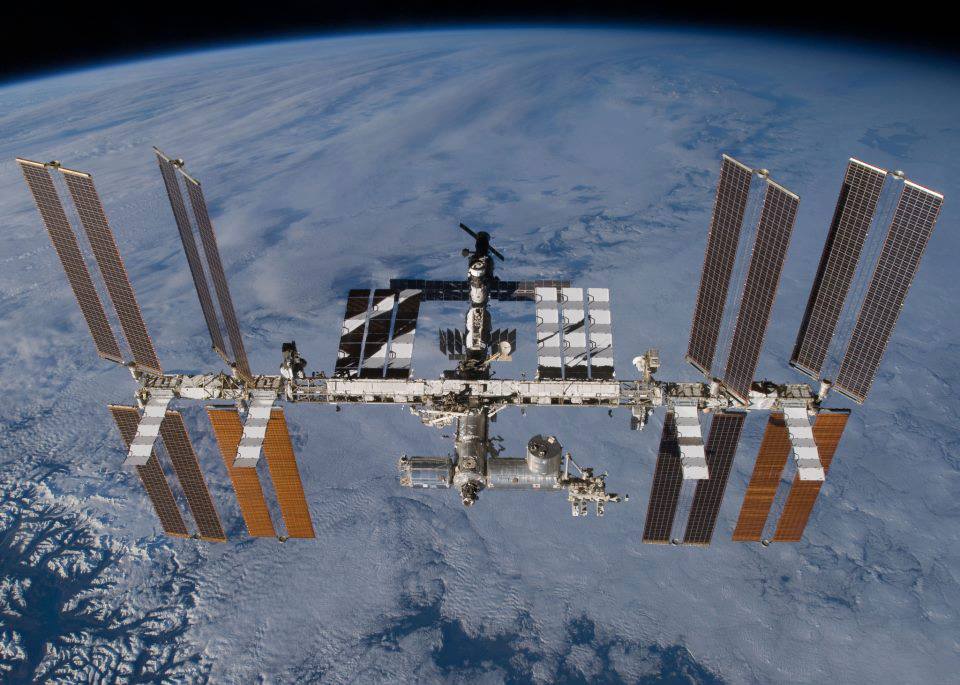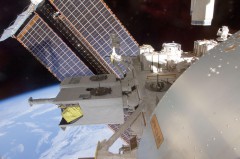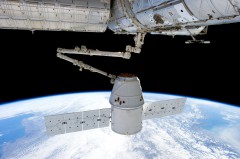
Two years after the retirement of the space shuttle fleet, the role of the International Space Station has long since begun the transitional process from a work-in-progress to a fully-fledged research facility in low-Earth orbit. In few other areas is this reality better exemplified than through two exciting scientific experiments—one already aboard the vast, multi-national outpost, the other scheduled to ride SpaceX’s CRS-3 Dragon in December—which seek to open our eyes in new ways to the coastal oceans and demonstrate novel technologies to enable faster space communications.
Earlier this week, NASA announced its intention to expand its Hyperspectral Imager for the Coastal Ocean (HICO) instrument to more Earth scientists and environmental researchers. The instrument, which resides atop the Exposed Facility of the Japanese Kibo laboratory, records highly detailed images of various terrestrial environments for research, support, and management. Originally conceived by the Naval Research Laboratory (NRL), last December it completed a three-year primary mission of collecting regional coastal ocean data for civilian and naval research and is now supported by NASA’s ISS Program. The space agency is inviting proposals for scientific or commercial use of HICO, with particular interest already expressed by the Environmental Protection Agency.

HICO is an imaging spectrometer with the capability to detail the biological and chemical signatures of aquatic and terrestrial materials and is the first of its kind to specifically examine the coastal oceans. It was launched aboard Japan’s H-II Transfer Vehicle (HTV)-2 Kounotori in September 2009, and after the cargo craft had berthed at the space station it was robotically transferred to the Exposed Facility. Each year, it collects approximately 2,000 scenes from around the world, with current projects ranging from water quality in Puerto Rico to seafloor mapping in South China and from the optical properties of water in northeast and western Australia to measurements of the effects of oil and other pollution.
At the same time, forthcoming research aboard the ISS will include the Optical Payload for Lasercomm Science (OPALS), slated to ride into orbit aboard SpaceX’s CRS-3 Dragon mission in early December. This experiment—due to fly from the storied Space Launch Complex (SLC)-40 at Cape Canaveral Air Force Station, Fla.—will test new technologies which could dramatically improve spacecraft communications, enhance commercial missions, and strengthen the transmission of scientific data by a factor of 10-100.

“Future operational laser communications systems will have the ability to transmit more data from spacecraft down to the ground than they currently do,” said Michael Kokorowski, OPALS project manager at the Jet Propulsion Laboratory (JPL) in Pasadena, Calif., where the instrument was fabricated. He added that this ability will help to mitigate a “significant bottleneck” for scientific investigations and commercial ventures. After arrival from Pasadena, OPALS was subsequently delivered to the Kennedy Space Center, Fla., where it is currently undergoing checkout, ahead of its launch from SLC-40, no earlier than 9 December. After the Dragon craft has berthed at the space station, OPALS will be transferred to the nadir (Earth-facing) side of a truss-based ExPRESS Logistics Carrier (ELC) for a 90-day mission.
Optical communications—or “lasercomm”—involves the modulation of data onto laser beams, enabling much higher data rates than currently achievable with radio-frequency (RF) transmissions. OPALS will transfer a video from its payload to a ground receiver at JPL’s Optical Communications Telescope Laboratory in Wrightwood, Calif. As the space station traverses the sky, a laser beacon will be transmitted from the ground telescope onto the payload and tracked. While maintaining lock on the uplink beacon with a closed loop control system and two-axis gimbal, OPALS will downlink a modulated laser beam with a formatted video in several demonstrations, each lasting about 100 seconds.
Want to keep up-to-date with all things space? Be sure to “Like” AmericaSpace on Facebook and follow us on Twitter:@AmericaSpace




One Comment
One Ping
Pingback:Japan’s White Stork Soars as HTV-4 Rockets into Orbit « AmericaSpace